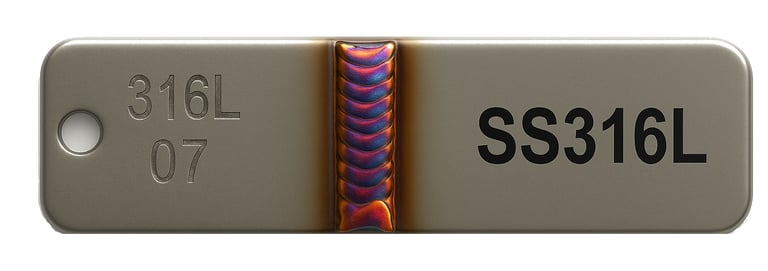
Corrosion Tests for Construction Materials of Chemical Reaction Vessels : A Focus on Immersion Testing
Chemical reaction vessels are critical components in industrial processes, especially in chemical, pharmaceutical, and petrochemical industries. These vessels must withstand harsh environments involving corrosive chemicals, elevated temperatures, and high pressures. Selecting appropriate construction materials for these vessels requires a thorough understanding of the corrosion resistance of candidate materials. Among the various corrosion testing methods available, immersion testing stands out as a fundamental and widely used approach. This section explores the immersion test methodology in detail, covering specimen preparation, test procedure, and interpretation of results, with the goal of informing material selection for chemical reaction vessels.
Importance of Corrosion Testing
Corrosion can lead to premature failure of reaction vessels, resulting in safety hazards, product contamination, and significant economic loss. Therefore, materials must be rigorously evaluated for corrosion resistance under simulated or actual service conditions. Corrosion testing provides data on material behavior in specific environments, helping engineers select materials that ensure both performance and longevity.
Immersion Testing: Overview
Immersion testing is a classical, yet effective, technique where metal specimens (often called test coupons) are submerged in corrosive media for a defined period. It simulates long-term exposure to process fluids and provides measurable data such as corrosion rate, pitting susceptibility, and surface degradation. Immersion testing is commonly governed by standards such as ASTM G31, which provides guidance on test practices.
Specimen / Coupon Preparation
1. Material Selection
Test coupons are prepared from the candidate materials being considered for vessel construction—typically stainless steels (e.g., 316L), glass, PTFE, high-nickel alloys (e.g., Hastelloy), titanium, or other corrosion-resistant alloys.
2. Geometry and Dimensions
Standard coupons are typically flat rectangular specimens measuring approximately 100 mm × 20 mm × 2 mm, although dimensions may vary depending on the application and test rig. Hole(s), ideally with a welding line, may be drilled for suspension. The picture below shows an example of a typical SS316L coupon.
3. Surface Preparation
Grinding: Surfaces are ground to a uniform finish, usually 120–600 grit, to remove mill scale and oxide layers.
Cleaning: Coupons are degreased with solvents (e.g., acetone), rinsed with deionized water, and dried.
Weighing: Precise initial weight (to four decimal places) is recorded using an analytical balance.
Micrographing: It is recommended that each coupon surface be photographed to record its condition, particularly micrographic features such as pitting or pinholes that may not be captured by weight change measurements after testing.
4. Labeling
Specimens are uniquely identified using etched codes or tags that withstand the test environment.
Immersion Test Procedure
1. Test Solution Preparation
The test solution is formulated to mimic actual process fluids, which may include acids (HCl, H2SO4), alkalis (NaOH), salts, organic solvents, or mixtures thereof. Parameters such as pH, temperature, and chemical concentration are carefully controlled.
2. Test Conditions
Temperature: Tests are conducted at ambient or elevated temperatures (e.g., 25°C to 150°C) using thermostatically controlled baths or autoclaves.
Duration: Typical exposure durations range from 24 hours to 30 days, depending on the goal of the test.
Agitation: Some tests incorporate agitation or flow to simulate real service conditions and enhance mass transfer.
3. Exposure Setup
Coupons are suspended in the solution using non-reactive holders (e.g., PTFE threads) to avoid galvanic coupling.
The test vessel is sealed (if necessary) and monitored for temperature, pH, and solution stability.
4. Post-Exposure Handling
Coupons are removed, rinsed thoroughly with deionized water, and dried.
Corrosion products are removed using chemical cleaning procedures as per ASTM G1, ensuring no base metal is lost.
Coupons are reweighed to determine mass loss.
If pre-test micrographic images were taken, re-photograph the same surfaces after testing to compare changes in surface condition.
Interpretation of Results
1. Corrosion Rate Calculation
The uniform corrosion rate is calculated using the formula:
Th
2. Visual and Microscopic Examination
Post-test inspection reveals the type of corrosion:
Uniform corrosion: even thinning over the surface.
Pitting: localized, deep holes—especially critical in chloride environments.
Crevice corrosion: attack in shielded areas.
Intergranular attack: often observed in sensitized stainless steels.
Stress corrosion cracking (if stress is applied during test).
Microscopy (optical or SEM) and profilometry may be employed for pit depth analysis.
3. Ranking and Material Selection
Based on corrosion rates and damage morphology, materials are ranked. Generally:
<0.1 mm/year = Excellent resistance
0.1–0.5 mm/year = Good
0.5–1.0 mm/year = Moderate
>1.0 mm/year = Poor, not recommended
If required, electrochemical tests (e.g., potentiodynamic polarization) are used to complement immersion results.
Conclusion
Immersion testing remains an essential method for evaluating the corrosion resistance of materials used in the construction of chemical reaction vessels. Through standardized procedures, it provides critical data on material performance in corrosive environments. Proper preparation, controlled testing conditions, and rigorous analysis are necessary to ensure reliable results. When interpreted correctly, immersion tests guide engineers in selecting materials that balance performance, safety, and economic viability—ensuring the long-term integrity of chemical processing equipment.
For optimal durability and performance, Equipodia recommends conducting immersion tests before finalising your equipment order. If any coupons are required, please contact us directly.


Equipodia Process Equipment UK Ltd
Customer Services
contact@equipodia.co.uk
+44-191 390 2300
© 2025 Equipodia. All rights reserved.
Quality chemical process equipment.
Registered in England No 16609310
Registered Address: 128 City Road, London EC1V 2NX, UK
